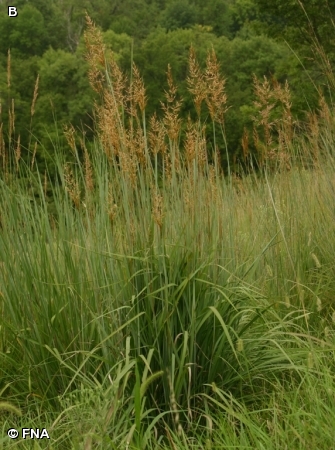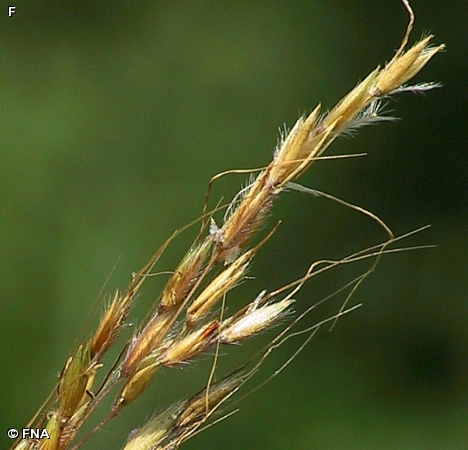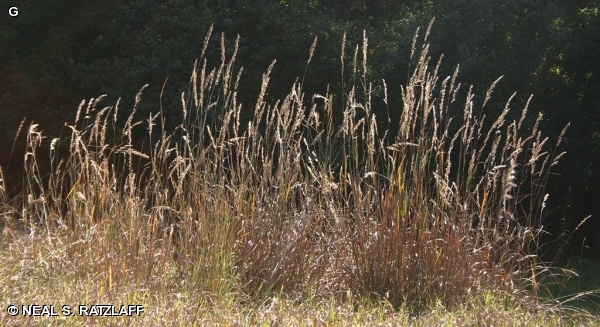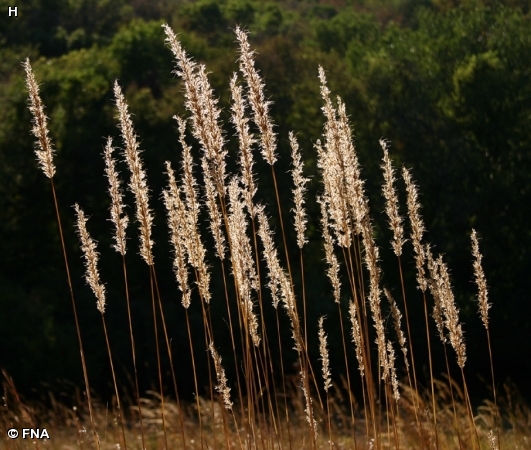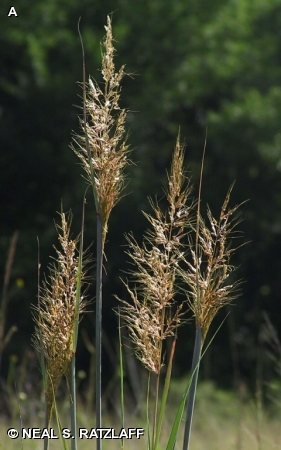
A native perennial from 2-7 feet tall with short rhizomes, often forming clumps. Pale green leaves are up to 18 inches long and less than 1/2 inch wide. At the base of the leaf where it joins the stem are a pair of narrow, pointed “rabbit-ear” projections (C). The flower cluster is a fairly dense 6-12 inch long, lance-shaped panicle. Initially, it is golden-yellow but fades to grayish-brown. Flowering plants have florets with prominent golden yellow anthers (E). Florets have bent and twisted bristle-like awns and are covered with whitish hairs (F) that glisten in the autumn sun (G,H,I). Foliage turns a rich reddish-brown at maturity.
Prairies, open woods, fields. Prefers deep moist soils, but is also found in uplands. At Fontenelle Forest, Indian Grass is common in the floodplain prairie planting. It is common in all prairie restorations at Neale Woods. Flowering occurs in August and September.
Indian Grass is one of the principal species of the tallgrass prairie often growing in association with Big Bluestem (Andropogon gerardii).
Cordgrass, a dominant plant in moister portions of the tallgrass prairie, was used by native Americans who thatched the wooden framework of their lodges before covering them with earth. The sharp leaf margins can cut exposed skin, hence the common name “ripgut” Its preference for moister sites has prompted other common names like Sloughgrass and Tall Marshgrass.
The content of NatureSearch is provided by dedicated volunteer Naturalists of Fontenelle Forest who strive to provide the most accurate information available. Contributors of the images retain their copyrights. The point of contact for this page is: Neal Ratzlaff.

